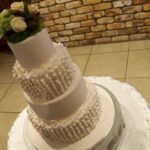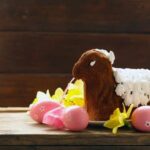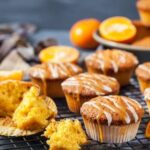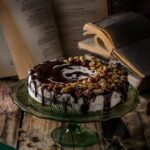Are you looking to learn how to decorate a cake with buttercream frosting? Buttercream frosting is a versatile and delicious option for adding beauty and flavor to your homemade cakes. In this article, we will explore the art of cake decorating using buttercream frosting, from preparing the cake for frosting to adding the final touches.
Buttercream frosting is a popular choice for many bakers due to its smooth texture and ability to hold intricate designs. As we delve into this topic, we will first discuss what buttercream frosting is, why it’s great for decorating cakes, and then move on to the tools and ingredients needed for the process.
Before diving into the decorating process, it’s important to understand the essential tools and ingredients required for creating beautifully decorated cakes with buttercream frosting. From there, we will provide tips on preparing the cake itself before moving on to making the perfect buttercream frosting.
So, if you’ve ever wanted to enhance your baking skills by learning how to decorate a cake with buttercream frosting, read on as we guide you through each step of this creative and delightful process.
Tools and Ingredients
Tools Needed
When it comes to decorating a cake with buttercream frosting, having the right tools is crucial. Some essential tools for this process include an offset spatula, piping bags, decorating tips, a turntable, and a bench scraper.
The offset spatula is perfect for spreading the frosting smoothly on the cake, while piping bags and decorating tips allow for intricate designs and decorations. A turntable makes it easier to frost the cake evenly from all angles, and a bench scraper helps achieve clean and smooth sides.
Ingredients Required
The key ingredients for creating buttercream frosting are unsalted butter, powdered sugar (also known as confectioners’ sugar), vanilla extract, heavy cream or milk, and a pinch of salt. These simple ingredients come together to create a creamy and delicious frosting that is perfect for decorating cakes. For those who want to add color to their frosting, gel food coloring in various shades can be used to achieve vibrant designs.
Other Useful Items
In addition to the basic tools and ingredients mentioned above, some other useful items can come in handy when decorating a cake with buttercream frosting. These include parchment paper for creating templates or piping practice shapes, a cake leveler for ensuring even layers in multi-tiered cakes, and edible decorations such as sprinkles or edible flowers for the final embellishments of the cake. Lastly, having a good quality cake stand or serving platter is important for displaying the finished masterpiece.
Preparing the Cake
When it comes to decorating a cake with buttercream frosting, the first and most important step is to ensure that the cake is properly prepared for the frosting and decorating process. This involves a few key tips and techniques to guarantee that the end result is not only visually appealing but also delicious.
Leveling and Stacking
Before applying any buttercream frosting, it is essential to ensure that the cake layers are leveled and stacked properly. Use a long serrated knife or a cake leveler to trim off any domed tops and create a flat, even surface for stacking. Once the layers are leveled, use a thin layer of buttercream frosting between each layer to help them adhere together.
Crumb Coating
To prevent any loose crumbs from mixing with the final layer of buttercream frosting, it is recommended to apply a thin layer of frosting over the entire cake before moving on to the final decorations. This crumb coat will seal in any loose crumbs and create a smooth base for adding more intricate designs with the buttercream.
Chilling
After applying the crumb coat, it’s best to chill the cake in the refrigerator for at least 30 minutes. Chilling helps set the crumb coat and makes it easier to apply additional layers of frosting without disturbing the cake’s shape or structure. Additionally, a chilled cake provides a firmer surface for piping techniques and other decorative elements, resulting in a more polished final look.
By following these tips for preparing the cake before applying buttercream frosting, you can ensure that your final decorated masterpiece not only looks stunning but also tastes delicious. Properly leveling and stacking layers, applying a crumb coat, and chilling the cake are all essential steps in achieving professional-looking results when using buttercream frosting as your decoration medium.
Making the Buttercream Frosting
Buttercream frosting is a delicious and versatile option for decorating cakes. It’s smooth, creamy, and easy to work with, making it perfect for creating beautiful designs and decorations. Making your own buttercream frosting at home allows you to have full control over the flavor and color, ensuring that your cake will be both tasty and visually appealing.
To make the perfect buttercream frosting, you will need a few key ingredients and tools:
- Unsalted butter
- Confectioners’ sugar
- Vanilla extract
- Heavy cream or milk
- Mixing bowl
- Mixer (hand or stand mixer)
- Spatula
Once you have gathered all the necessary ingredients and tools, follow these steps to make the perfect buttercream frosting:
- Start by beating the softened butter in a mixing bowl until it is smooth and creamy.
- Gradually add in the confectioners’ sugar, one cup at a time, mixing well after each addition.
- Add in the vanilla extract and heavy cream or milk, then continue to beat the mixture until it is light and fluffy.
- If you’re planning on adding color to your frosting, this is the time to do so. Use gel food coloring for vibrant shades without altering the consistency of the frosting.
By following these simple steps, you can create a delicious and velvety buttercream frosting that will be perfect for decorating your cake with beautiful designs and decorations.
Using Piping Techniques
When it comes to cake decorating, piping techniques are essential for creating beautiful designs and decorations on the cake. There are various piping tips available, each producing different shapes and designs, allowing for creativity and versatility in your cake decoration. Some of the most common piping tips include round tips, star tips, leaf tips, petal tips, and more.
To create stunning floral designs, use petal tips to make realistic flower petals. You can also use a combination of round and star tips to create intricate textures and patterns on the cake. Experimenting with different piping techniques will allow you to add visual interest and complexity to your cake decorations.
In addition to different piping tips, mastering pressure control is crucial when using piping techniques. The amount of pressure applied while piping can greatly affect the outcome of your design. Practice applying consistent pressure to achieve smooth and even lines or adding varying pressure for textured effects.
| Piping Tips | Description |
|---|---|
| Round Tips | Creates basic lines, dots, and outlines |
| Star Tips | Produces textured stars, swirls, and zigzags |
| Leaf Tips | Mimics lifelike leaves for floral decorations |
| Petal Tips | Makes realistic flower petals for floral arrangements |
Adding Texture and Dimension
One of the best things about decorating a cake with buttercream frosting is the ability to add texture and dimension to your creation. There are several techniques you can use to achieve this, such as using different piping tips, creating edible sculptures, or even adding edible glitter for some sparkle. By adding texture and dimension, you can make your cake look visually appealing and interesting.
To add texture, consider using an offset spatula to create swoops and swirls in the frosting. This technique not only adds visual interest but also gives the cake a homemade and rustic feel. Additionally, you can experiment with different piping tips to create various textures, such as ruffles, shells, or rosettes. These techniques help make the cake look more professional and decorative.
In terms of adding dimension, consider using edible decorations such as fondant flowers or sugar pearls. These elements not only add visual depth but also create a more elaborate and elegant look for your cake. Another way to add dimension is by layering different colors of buttercream frosting on the cake. By using an ombre technique or creating a watercolor effect, you can make your cake appear more dynamic and eye-catching.
| Texture Techniques | Dimension Techniques |
|---|---|
| Using piping tips for different textures (ruffles, shells) | Layering different colors of buttercream frosting for ombre effect |
| Creating swoops and swirls with an offset spatula | Adding edible decorations like fondant flowers |
| Experimenting with edible glitter for sparkle | Creating a watercolor effect with layered frosting |
Adding Color
When it comes to decorating a cake with buttercream frosting, adding color is an essential step to creating a visually stunning and appealing design. Here are some tips and techniques for effectively adding color to buttercream frosting:
- Choose the right type of food coloring: Gel or paste food coloring works best for buttercream frosting as they are more concentrated and will not change the consistency of the frosting. Avoid using liquid food coloring as it can make the frosting too runny.
- Add color gradually: Start by adding a small amount of food coloring to the prepared buttercream frosting and mix it well. Gradually add more color until you achieve the desired shade. Remember, you can always add more color, but you can’t take it away, so start with a small amount.
- Use a color wheel for mixing colors: If you want to create custom shades, use a color wheel as a guide for mixing different colors together. For example, mixing red and blue will create purple, while mixing blue and yellow will create green.
Adding vibrant and attractive colors to your buttercream frosting will elevate the overall look of your cake, making it visually appealing and eye-catching. With the right techniques and tools, you can create beautiful designs that are sure to impress everyone at any event or celebration.
Finishing Touches
In conclusion, decorating a cake with buttercream frosting can truly elevate the final product to a stunning and professional-looking masterpiece. By following the detailed steps outlined in this article, anyone can create a beautifully decorated cake that is sure to impress. From preparing the cake for frosting to using piping techniques and adding color, each step plays a crucial role in achieving the perfect design.
One final tip for putting the finishing touches on the cake is to pay attention to small details. Whether it’s adding edible pearls, sprinkles, or fresh flowers, these little touches can make a significant difference in the overall presentation of the cake. Additionally, taking the time to smooth out any imperfections and ensuring that all decorations are neat and precise will contribute to a polished and professional finish.
Finally, don’t forget to consider the presentation of the cake as a whole. Placing it on a beautiful cake stand or serving platter and adding complementary decorations around the base of the cake can enhance its visual appeal. With these final tips in mind, anyone can confidently decorate a cake with buttercream frosting and create an impressive centerpiece for any special occasion.
Frequently Asked Questions
How Do You Decorate a Cake With Buttercream for Beginners?
Decorating a cake with buttercream for beginners involves starting with a crumb coat to seal in the crumbs, followed by adding a thicker layer of buttercream for smoothness. Using a turntable can help with spreading the buttercream evenly, and using a bench scraper can help create clean edges.
Piping bags and tips can be used to create different designs and textures, and experimenting with different techniques will help develop skills.
How Do You Put Buttercream on Top of a Cake?
Putting buttercream on top of a cake is best achieved by starting at the center and working outwards, using an offset spatula or bench scraper to spread it evenly. It’s important to apply enough pressure to cover the cake without pressing too hard and causing crumbs to mix into the buttercream.
Taking time to make sure the surface is level and smooth will result in a professional-looking finish.
What Is the Trick to Buttercream Frosting?
The trick to buttercream frosting lies in getting the right consistency. This means properly creaming the butter before adding powdered sugar and other ingredients, as well as incorporating liquid ingredients slowly to avoid making the icing too runny.
Adjusting the thickness of the frosting by adding more powdered sugar or liquid as needed will ensure that it holds its shape when piped or spread onto cakes or cupcakes.

Welcome to my blog about home and family. This blog is a place where I will share my thoughts, ideas, and experiences related to these important topics. I am a stay-at-home mom with two young children. I hope you enjoy reading it! and may find some helpful tips and ideas that will make your home and family life even better!





